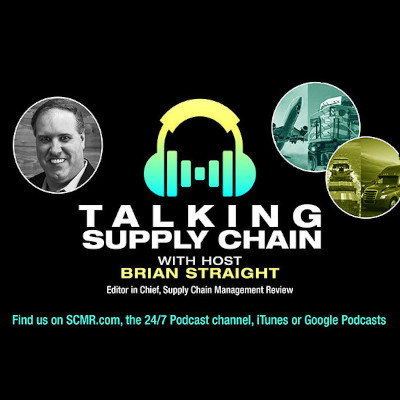In 2023, Mexico became the U.S.’s top trading partner with $798.9 billion dollars in total trade between the two countries. Eighty percent of Mexico’s exports come into the United States, according to a June 6 update from the Congressional Research Service. And while we are getting more goods from Mexico, we are also getting fewer from China, with trade down 16.7% between the countries.
But are we really getting fewer goods from China? Data shows Chinese exports to Mexico growing significantly, with shipping containers from China to Mexico up 60% in January of this year.
To discuss how nearshoring has changed the flow of goods throughout the supply chain, Jordan Dewart, president of Redwood Logistics Mexico, and Jose Minarro, managing director of Sunset Transportation, joined the Talking Supply Chain podcast to discuss the impact Chinese investment in Mexico is having on border trade.
“I think it dates back to COVID where you saw a lot of [American] companies had their supply chains tied up with China and they just absolutely got burned,” Dewart said. “They got held hostage, and container rates quintupled, five times. So, this near-shoring rise that you’ve seen over the last few years kind of blew up. But at the same time, you’re seeing a lot of trade disputes between the U.S. and China. I think the main reason is Chinese companies have decided to expand into Mexico and take care of this nearshoring wave. And you’re seeing a lot of component parts, raw materials, and even finished goods pour into Mexico from China.”
Minarro noted that Mexico has a lot of advantages, in part due to lower or zero tariffs from the USMCA agreement, and its proximity to the U.S., allowing companies to shorten supply chains and reduce costs and risks with transporting materials thousands of miles.
“We do help a lot of these new manufacturers settle in Mexico and they come full of challenges, right? Finding a location, finding a location with skilled labor, etc. But the initial conversation is always around how much in duties are they going to pay when they ship back into the U.S.,” Minarro said, addin that “I truly think that it is directly related to the fact that coming from China directly, they’re looking at tariff rates as high as 25% or more, or more in some instances, 100%. And coming from Mexico, leveraging from USMCA, former NAFTA, they’re looking at zero duty rates.”
Listen as the two guests dive into the impact the increased border trade is having on the border cities in Texas and Mexico, and why the interest in Mexican Maquiladoras is rising.
Listen today.
Subscribe to the Supply Chain Management Review podcast
Sign up today and get the next podcast episode sent to you. Subscribe via Apple and Google Podcasts or choose another podcast platform. Subscribe via RSS or download an MP3 or media file.Latest Supply Chain Management Review podcast episodes
Here are a few of our latest podcast episodes.- Talking Supply Chain: 2025 trends with Abe Eshkenazi.
- Frictionless Podcast: How the U.S. ExIm Bank Helps American Exporters.
- Talking Supply Chain: The top 3 risk trends for 2025.
- Talking Supply Chain: Assessing the freight market.
- Talking Supply Chain: Asking the right questions before a network move.
- In Transit Podcast: What Makes Service Supply Chains Hard To Predict And Manage?.
SC
MR

Subscribe

Supply Chain Management Review delivers the best industry content.

Editors’ Picks





